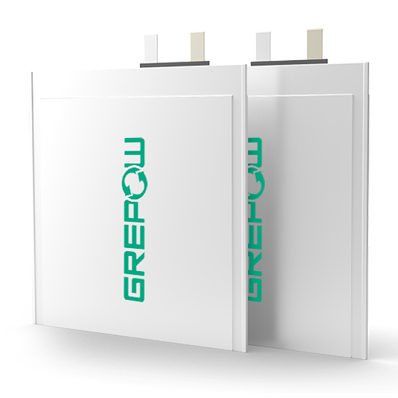The internal resistance ( IR ) of LiPo batteries | Battery Monday
Intro
Internal resistance ( IR ) is an opposition against the current flow in a lithium-ion battery while it is in operation, and it is an important technical index to measure the performance of a battery. A large amount of internal resistance turns a part of the energy into heat. This becomes a factor for the increase in battery temperature, which can result in a decrease of the voltage and the shortening of the discharge time, ultimately leaving a serious impact on the battery performance and lifespan.
Ohmic and polarized internal resistance
For Li-ion batteries, there are two components that impact internet resistance: ohmic internal resistance and polarized internal resistance. Ohmic internal resistance is composed of electrode material, electrolytes, diaphragm resistance and contact resistance between the plates, which is related to the size, structure and assembly of the battery. The polarized internal resistance, on the other hand, is the resistance caused by polarization during the electrochemical reaction and also includes the resistance caused by the concentration difference in polarization.

Moreover, the internal resistance is not a constant, and it changes over time during charging and discharging because the composition of the active material, the concentration of the electrolyte and the temperatures are constantly changing. In contrast, the ohmic internal resistance obeys Ohm's law, and the polarized internal resistance grows with increasing current density.

Influencing factors
Under normal conditions, a battery with small internal resistance has a strong high-current discharge capability, and a battery with large internal resistance has a weak discharge capability. Experience shows that the larger the size of the lithium-ion battery, the smaller the internal resistance, and vice versa.The size of the internal resistance of the battery will be affected by its own external factors, including raw materials, the production process, and how it is used. It is worth mentioning that the usage and storage temperature greatly affects the activity of the electrochemical material and directly determines the rate of electrochemical reactions and ion movement. The lower the temperature, the slower the ion transport rate and the higher the internal resistance. It also grows in proportions with increasing depth of charge and discharge.
Conclusion
In short, resistance is an important factor in measuring the merits of a battery. As the battery is used, the battery performance will continue to decay and the internal resistance will increase. Therefore, developing low internal-resistance batteries is the key to improving battery performance, which requires our battery manufacturers to continuously optimize and improve product quality to provide users with more stable and efficient energy.
Video
Battery Monday Channel
Grepow‘s Battery Monday Channel is about battery knowledge and battery tip. If you have any questions about this topic (The internal resistance ( IR ) of LiPo batteries ) or have any battery-related things you want to know, please feel free to contact us by email at info@grepow.com. We specialize in drone smart batteries, industrial lfp batteries, shaped batteries, high discharge rate batteries, high voltage batteries, etc.
Our sub-brands Tattu and Gens ace focu on UAV batteries and RC batteries, respectively. Or if anything we could improve, email us, we will read the comment and provide a high-quality battery knowledge tutorial.
Grepow official website: https://www.grepow.com/
Grepow Facebook: https://www.facebook.com/grepowbattery
Grepow Linkedin: Grepow Battery
Related Articles
-

FPV Drone Types: All You Need to Know
2025-03-06 -

The Ultimate Guide to FPV Battey
2025-02-11 -

Exploring the Power Behind Quadrupedal Robots: A Deep Dive into Robot Dog Batteries
2025-01-22


















































